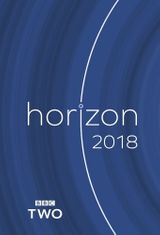
Horizon 55
2018-02-05 | Documentary | 13 episodes60 Seasons
Episode
My Amazing Brain: Richard's War (2018)
The rarely seen journey back to recovery of Richard Gray after a life-changing catastrophic stroke. Initially bed bound and unable to do anything, including speak, the initial outlook was bleak, yet occasionally small glimmers of hope emerged. Armed always with her camera, his film-maker wife Fiona captures the moment Richard moves his fingers for the first time, and then over months she documents his struggle to relearn how to walk again.

Teenagers vs Cancer: A User's Guide (2018)
What is it like to be young and find out you have got cancer? What you will find out in this film may surprise you. This film, narrated by actor and comedian Jack Whitehall, tells 11 inspirational stories, revealing how a range of young people have dealt with their cancer diagnosis and the treatment process. We hear, primarily in their own words, about their fears, their hopes and their experiences - affirming the view that 'the best therapist for a teenager with cancer... is another teenager with cancer.'

How to Build a Time Machine (2018)
Time travel is not forbidden by the laws of nature, but to build a time machine, we would need to understand more about those laws and how to subvert them than we do now. And every day, science does learn more. In this film Horizon meets the scientists working on the cutting edge of discovery - men and women who may discover how to build wormholes, manipulate entangled photons or build fully functioning time crystals. In short, these scientists may enable an engineer of the future to do what we have so far been only able to imagine - to build a machine that allows us travel back and forward in time at the touch of a button. It could be you! Science fiction? Watch this space.

Spina Bifida & Me (2018)
One in every 1,000 pregnancies in Britain has a spine or brain defect like spina bifida. 30 years ago, actress Ruth Madeley was one of them. Despite having spina bifida herself, it is a condition she doesn't fully understand. In this programme, Ruth sets out to discover why she has it, whether it could have been prevented and what it means for her future. Ruth meets the lord campaigning for a change in the law that he says could prevent thousands of birth defects. And she discovers that a pioneering surgery could offer a different future for babies diagnosed with spina bifida, by operating on them before they are even born. She discovers how this surgery was invented, meets the families whose lives it has changed and follows the team of British surgeons preparing to perform this extraordinary foetal surgery in the UK for the very first time. But Ruth also examines attitudes in Britain today and asks whether we should change the way we see disability.

Jupiter Revealed (2018)
'To send a spacecraft there is a little bit insane,' says Scott Bolton when talking about Jupiter, the largest planet in the solar system. But that is exactly what he has done, because Scott is head of Juno, the Nasa mission designed to peer through Jupiter's swirling clouds and reveal the wonders within. But this is no ordinary world. This documentary, narrated by Toby Jones, journeys with the scientists into the heart of a giant. Professor Kaitlin Kratter shows us how extreme Jupiter is. She has come to a quarry to measure out each planet's mass with rocks, starting with the smallest. Mercury is a single kilogram, and the Earth is 17. But Jupiter is on another scale entirely. It is seven tonnes - that is two and a half times the mass of all the other planets combined. On Kaitlin's scale it is not a pile of rocks, it is the truck delivering them. With extreme size comes extreme radiation. Juno is in the most extreme environment Nasa has visited. By projecting a 70-foot-wide, life-size Juno on a Houston rooftop, Scott shows us how its fragile electronics are encased in 200kg of titanium. As Scott puts it, 'we had to build an armoured tank to go there.' The team's efforts have been worthwhile. Professor Andrew Ingersoll, Juno's space weatherman, reveals they have seen lightning inside Jupiter, perhaps a thousand times more powerful than Earth's lightning. This might be evidence for huge quantities of water inside Jupiter. Prof Ingersoll also tells us that the Great Red Spot, a vast hurricane-like storm that could swallow the Earth whole, goes down as far as they can see - 'it could go down 1,000s of kilometres'. Deeper into the planet and things get stranger still. At the National Ignition facility in northern California, Dr Marius Millot is using powerful lasers normally used for nuclear fusion for an astonishing experiment. He uses '500 times the power that is used for the entire United States at a given moment' to crush hydrogen to the pressures inside Jupiter. Under these extreme conditions, hydrogen becomes a liquid metal. Juno is finding out how much liquid metallic hydrogen is inside Jupiter, and scientists hope to better understand how this flowing metal produces the most powerful aurora in the Solar System. But what is at Jupiter's heart? In Nice, Prof Tristan Guillot explains how Juno uses gravity to map the planet's centre. This can take scientists back to the earliest days of the solar system, because Jupiter is the oldest planet and it should contain clues to its own creation. By chalking out an outline of the Jupiter, Tristan reveals there is a huge rocky core - perhaps ten times the mass of Earth. It is now thought Jupiter started as a small rocky world. But there is a surprise, because Juno's findings suggest this core might be 'fuzzy'. Tristan thinks the planet was bombarded with something akin to shooting stars. As he puts it, 'Jupiter is quite unlike we thought'.

Photo
